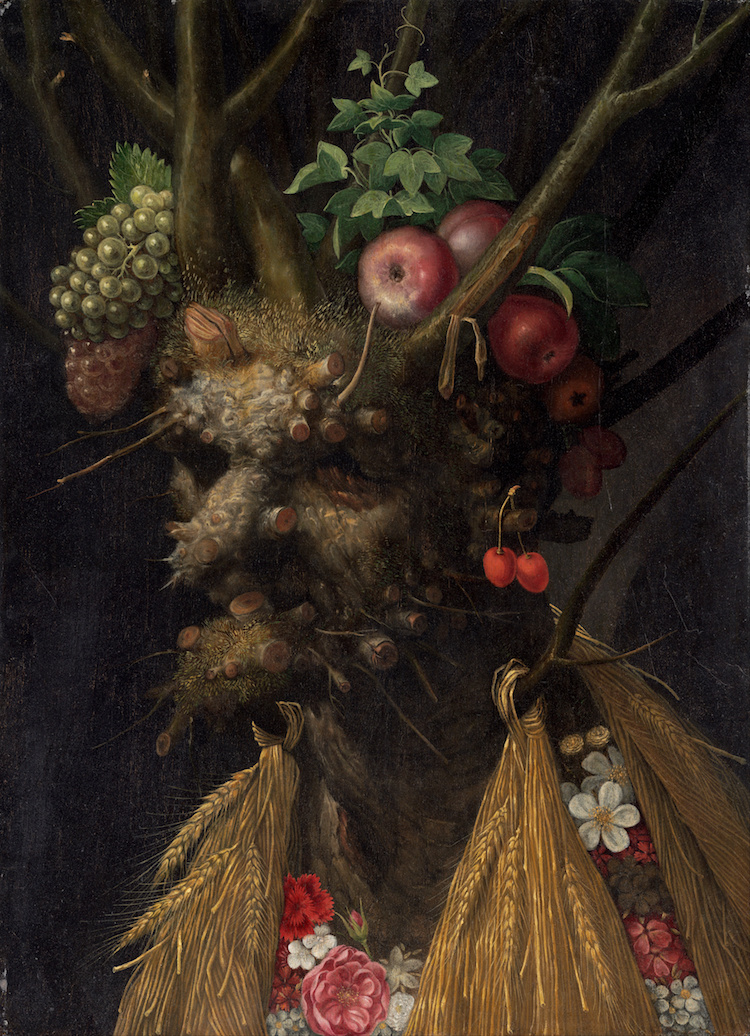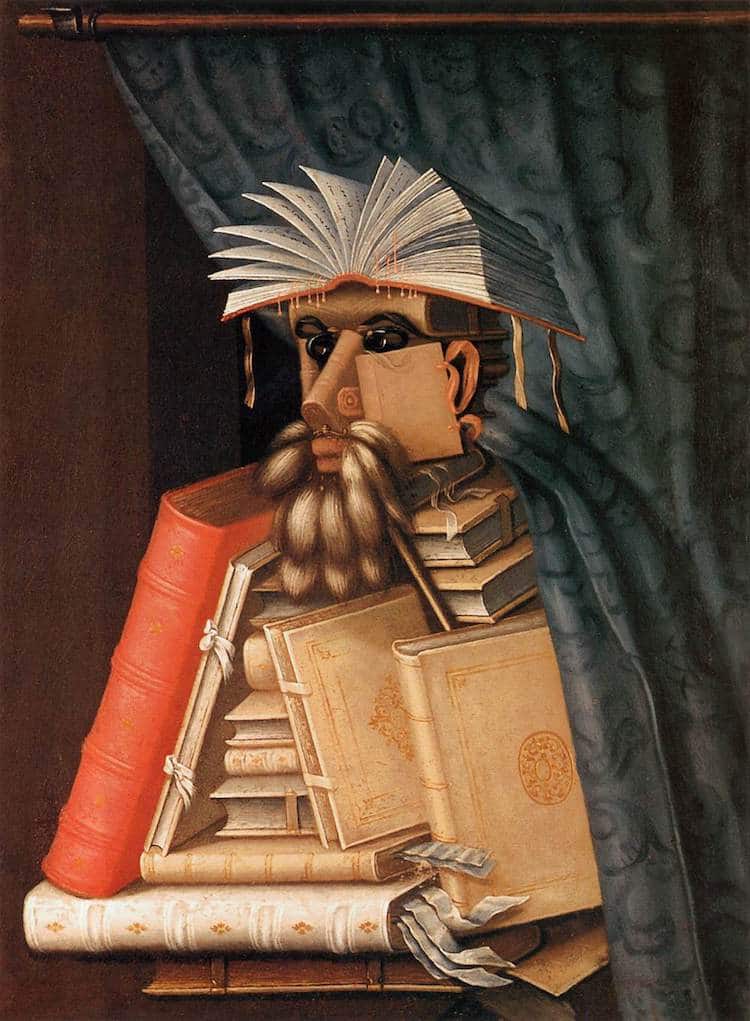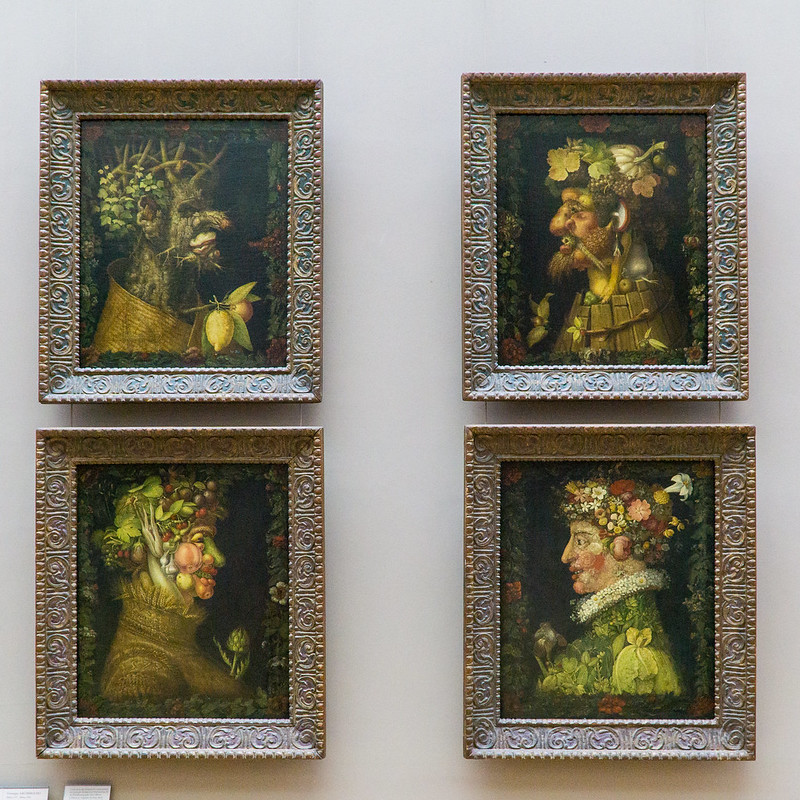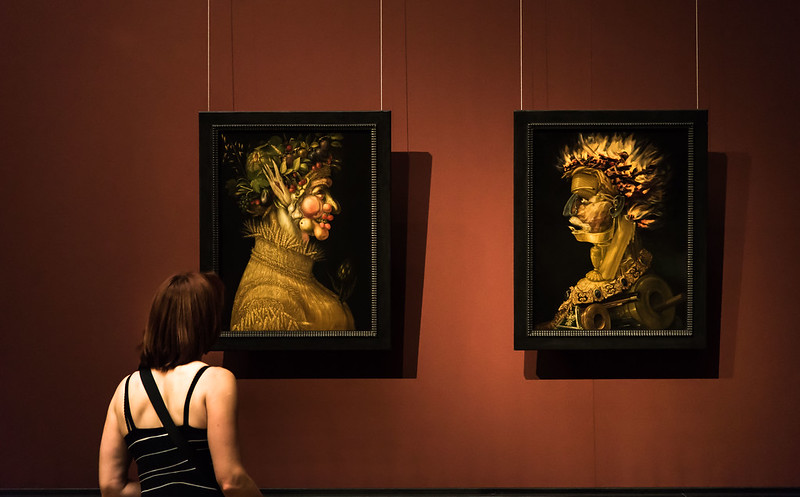
“Four Seasons in One Head,” c. 1590 (Photo: Google Art Project via Wikimedia Commons Public Domain)
There have been many memorable portraits throughout the history of art, including the likes of Leonardo’s legendary Mona Lisa and Van Gogh‘s iconic self-portraits. There’s no denying that the genre of portrait painting has been a staple for centuries. Most of these portraits offer straightforward depictions of people. However, in the 16th century, painter Giuseppe Arcimboldo turned the genre on its head with his topsy-turvy Composite Heads.
Who is Giuseppe Arcimboldo?
Giuseppe Arcimboldo (1526-1593) was a master of Mannerism, a style that put an elaborate and exaggerated twist on traditional Renaissance art. Highly ornamental and rooted in self-expression, this genre of art would prove to be a perfect fit for Arcimboldo, whose expertise was in the decorative arts.

“Self-Portrait,” before 1593 (Photo via Wikimedia Commons Public Domain)
At the age of 36, Arcimboldo left his native Milan for Prague. In “the City of a Hundred Spires,” he worked in the imperial court. While, first-and-foremost, he was the court painter, he also designed stained glass windows, frescoes, tapestries, and festival costumes for the Habsburg rulers.
Composite Heads
Arcimboldo’s applied art endeavors and conventional official portraits were celebrated. However, he was—and is—most well-known for his peculiar paintings of people made out of found objects. Called Composite Heads, these allegorical portraits feature busts made out of everything from fruits and vegetables to sea creatures and library books.

“The Water,” 1566 (Photo via Wikimedia Commons Public Domain)
Scientific Studies
Arcimboldo began creating these whimsical works of art while working under Emperor Maximilian II. As a gift to the ruler, Arcimboldo created two of his most famous series: The Seasons and The Elements. Conveying the different times of year and the classification of the material world as human forms, these four-piece collections demonstrate his imaginative approach to representing and personifying nature.
While such depictions may seem unusual for a court painter, Maximilian actively encouraged Arcimboldo’s imaginative art. In fact, he granted the artist access to his collections of rare flora and fauna so that he could “build fantastic faces out of the natural specimens he observed” (the National Gallery of Art).
He also displayed Arcimboldo’s paintings in his prized Kunstkammer, or “cabinet of curiosities.” Here, they served as both fitting decorations and as a fascinating “encyclopedia of the plants and animals that Maximilian acquired for his botanical garden and menagerie.”

“Vertumnus,” c. 1590-1591 (Photo via Wikimedia Commons Public Domain)
Witty Commentary
In addition to their role as unique studies of specimens, these collage-like paintings also existed as playful musings. Some, like The Librarian, comically offer social commentary. Featuring a droll figure made out of a strategically stacked set of books, this painting is believed to criticize “not those who love learning but rather materialistic book collectors more interested in acquiring books than in reading them” (K. C. Elhard, “Reopening the Book on Arcimboldo’s Librarian“).

“The Librarian,” c. 1570 (Photo: WGA via Wikimedia Commons Public Domain)
On top of silly satire, these paintings also offer comedic relief in the form of puns. While the meanings of many of these idioms have been lost with time, some still resonate today. For example, in Summer, a component of his Seasons series, the figure’s ear is represented by an ear of corn. And, in his Element series, Fire cleverly features fire strikers, a symbol of the imperial family.
Similarly, some of his Composite Heads embody another literary device: the palindrome. Referred to as Reversible Heads, these paintings reveal a second image when flipped upside down. In Reversible Head with Basket of Fruit, an arrangement of apples, pears, pomegranates, and grapes becomes a plump face, and in Vegetables in a Bowl, a still life of root vegetables transforms into a bearded figure.

“Reversible Head with Basket of Fruit,” 1590 (Photo via Wikimedia Commons Public Domain)
Legacy
Like other Late Renaissance work, the art of Giuseppe Arcimboldo is not as well-known as that of Michelangelo, Raphael, and other High Renaissance artists. However, after increased exposure in major museums like the Louvre and the National Gallery of Art in Washington, D.C., his peculiar portfolio has gained prominence and popularity—a trend that will hopefully continue for years to come.
Related Articles:
Renaissance Paintings Come to Life as Giant Sculptures Representing the Four Seasons
Fantastical Heads Made of Trees and Flowers Represent the Four Seasons
Exploring the Major Contributions of the Lesser-Known ‘Northern Renaissance’
Exploring the Extravagance and Drama of Baroque Art and Architecture


